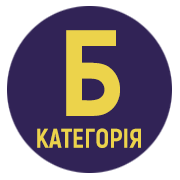GAME FORMS OF MUSICAL AND RHYTHMIC ORGANIZATION ACTIVITIES OF SCHOOLCHILDREN
Abstract
Modernization of the content and methods of domestic art education is accompanied by the introduction of effective approaches and new forms to the musical and aesthetic development of schoolchildren. The proposed article examines the importance of game forms of organizing pupils musical and rhythmic activities, which provide motor activity, the development of musical abilities and certain rhythmic skills, awareness of the aesthetic expressiveness of rhythm as a means of expression, and have a health-improving effect. The natural reaction of children to music is movement, which increases emotional response to it, interest, attention, causing joyful feeling and satisfaction. During music lessons, this involuntary motor-emotional reaction becomes meaningful and expressive based on the use of various organizational forms, special methods and techniques, including game ones. The opinion that play is the leading activity of children that satisfies their biological, spiritual and social needs has been updated. It promotes active knowledge of the environment and oneself in it, awareness of one’s own “I” and one’s capabilities, strengthening the desire to apply acquired knowledge in various game situations, development of the ability to navigate in new conditions and critically evaluate the obtained result, strive for its improvement, independence and creativity. As an active creative activity, the game is aimed at expressing an emotional reaction to a musical piece through appropriate body movements, which help to more fully perceive and understand its artistic and figurative content, means of musical expressiveness. In addition, rhythmically organized movements to music have a therapeutic effect on the child’s personality, improving his physical, psychological and emotional state. The organization of musical activities for the rhythmic development of schoolchildren in music lessons and extracurricular time requires the active work of the teacher, his flexibility in responding to educational needs and requests, as well as openness to innovation and creativity.
References
Пермяков О., Власенко І., Лаврентьєва О. (2014). Дидактичні ігри на уроках музики. Київ: КНТ. 271 с.
Гавриш Н. (2012). Калейдоскоп інформаційно-ігрової творчості дітей. Київ: Видавничий дім «Слово». 256 с.
Гумінська О. (2020). Технологія самовираження учнів у процесі колективного музикування. Мистецтво та освіта, № 3 (97). С. 20–25.
Савченко М. (2014). Виховання самостійності у дітей старшого дошкільного віку в ігровій діяльності. Автореф. дис. ... канд. пед. наук. Південноукраїнський національний педагогічний університет імені К. Д. Ушинського. 18 с.
Чеснокова Л., Золотарьова О. (2019). Заняття з логоритміки для дітей з вадами мовлення. Харків: Вид. група «Основа». 160 с.





